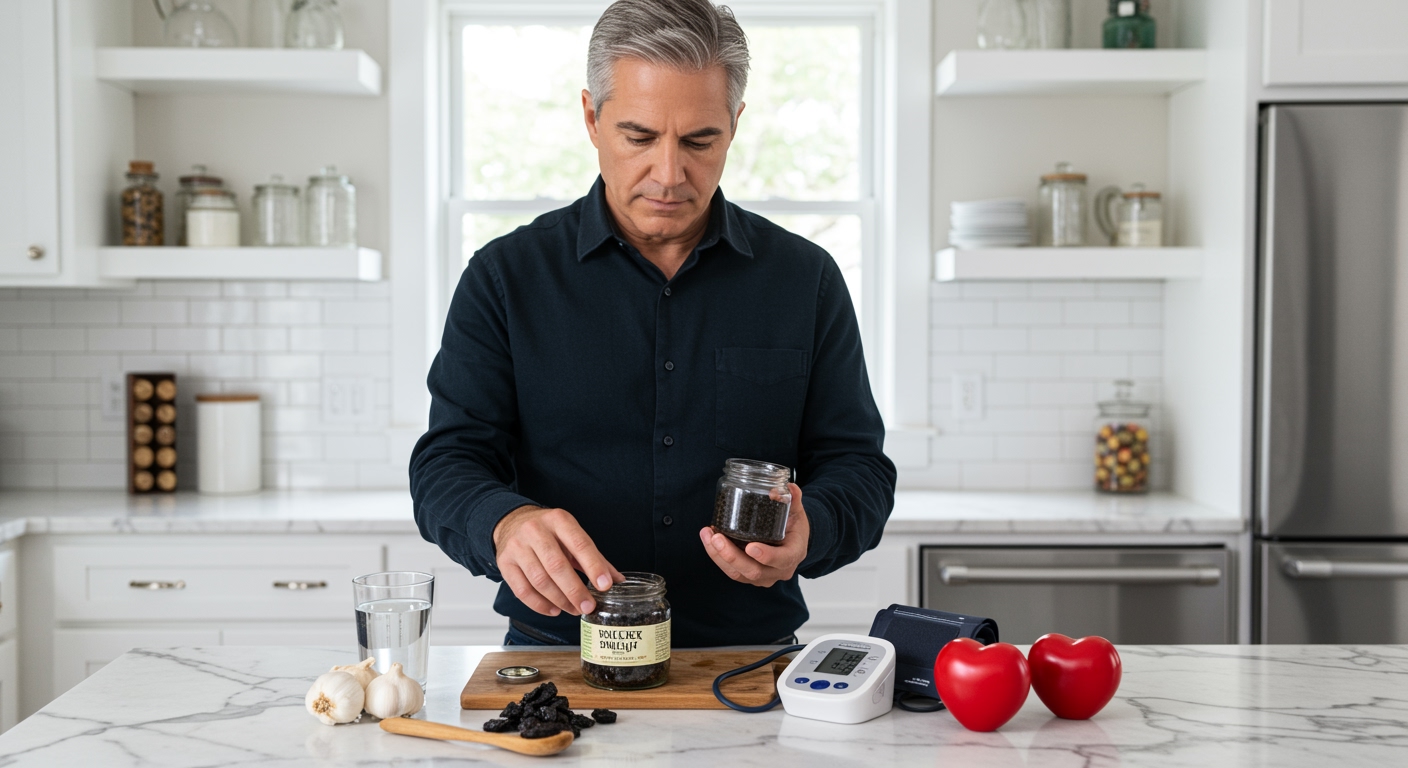✪ Key Takeaway: Shilajit may help lower blood pressure through improved endothelial function, but evidence remains limited and requires medical supervision.
Introduction
Your doctor just told you that your blood pressure numbers are climbing into dangerous territory.
You start researching natural alternatives and stumble across shilajit, this mysterious black substance that promises to fix everything from energy levels to heart health.
Hi, I’m Abdur, your nutrition coach, and today I’m going to explain whether shilajit can actually help manage your high blood pressure and what the science really says about this ancient remedy.
What Does Research Say About Shilajit and Blood Pressure?
The most significant study on shilajit and blood pressure comes from researchers who tested purified shilajit on elderly people with hypertension.
This randomized controlled study found that participants who took 250mg of purified shilajit twice daily for 12 weeks showed meaningful improvements in their cardiovascular health markers.
The researchers measured something called endothelial function, which refers to how well the inner lining of your blood vessels works.
When your endothelium functions properly, your blood vessels can relax and contract smoothly, helping maintain healthy blood pressure levels.
The study participants also showed reduced arterial stiffness, meaning their blood vessels became more flexible and could handle blood flow changes more effectively.
However, this research involved only a small group of people, and we need larger studies to confirm these promising results.
✪ Fact: Shilajit contains over 84 minerals and fulvic acid, which may contribute to its cardiovascular benefits.
How Might Shilajit Lower Blood Pressure?
Shilajit appears to work on blood pressure through several biological mechanisms that target the root causes of hypertension.
The primary mechanism involves oxidative stress reduction, which occurs when harmful free radicals damage your blood vessel walls.
When oxidative stress damages your blood vessels, they become stiff and narrow, forcing your heart to pump harder and raising your blood pressure.
Shilajit contains powerful antioxidant compounds, particularly fulvic acid and humic acid, that neutralize these harmful free radicals.
Another important mechanism involves nitric oxide production, a molecule that signals your blood vessels to relax and widen.
When your body produces adequate nitric oxide, your blood vessels maintain better flexibility, allowing blood to flow more easily and reducing pressure on your arterial walls.
Some research suggests that shilajit may also help regulate the renin-angiotensin system, which controls blood volume and vessel constriction in your body.
✪ Pro Tip: Look for purified shilajit supplements that have been tested for heavy metals and contaminants.
What Are the Potential Risks and Side Effects?
While shilajit shows promise for blood pressure management, you need to understand the potential risks before adding it to your routine.
The biggest concern involves drug interactions, particularly if you already take blood pressure medications.
Combining shilajit with ACE inhibitors, beta-blockers, or diuretics could potentially cause your blood pressure to drop too low, leading to dizziness, fainting, or other dangerous complications.
Quality control represents another major concern, as many shilajit products on the market contain heavy metals like lead, mercury, and arsenic.
These contaminants can actually increase blood pressure and cause serious health problems over time, completely negating any potential benefits.
Some people experience digestive upset, headaches, or allergic reactions when they first start taking shilajit.
Additionally, shilajit may affect blood sugar levels, so people with diabetes need extra caution when considering this supplement.
✪ Note: Never stop or reduce prescribed blood pressure medications without consulting your healthcare provider first.
Should You Try Shilajit for High Blood Pressure?
The decision to use shilajit for blood pressure management requires careful consideration of your individual circumstances and medical history.
If you have mild hypertension and want to explore natural options alongside lifestyle changes, shilajit might be worth discussing with your healthcare provider.
However, if you have moderate to severe high blood pressure, proven medications should remain your primary treatment approach.
The most sensible approach involves using shilajit as a complementary therapy rather than a replacement for established treatments.
Start with proven lifestyle modifications like reducing sodium intake, increasing physical activity, managing stress, and maintaining a healthy weight.
If you decide to try shilajit, choose a reputable brand that provides third-party testing results and start with the lowest recommended dose.
Monitor your blood pressure regularly and watch for any unusual symptoms or side effects during the first few weeks of supplementation.
✪ Pro Tip: Keep a blood pressure log to track changes and share the data with your healthcare provider.
The Bottom Line
Shilajit shows promising potential for supporting healthy blood pressure through improved endothelial function and reduced oxidative stress, but the current evidence remains limited to small studies.
Your health deserves more than hope and marketing claims – it deserves proven strategies and professional guidance.
I would love to hear about your experiences with natural blood pressure management or any questions you might have about shilajit in the comments below.
References
At NutritionCrown, we use quality and credible sources to ensure our content is accurate and trustworthy. Below are the sources referenced in creating this article:
- International Journal of Pharmacology and Phytochemistry: Effect of Purified Shilajit on Hypertension
- International Journal of Basic and Clinical Pharmacology: Shilajit Clinical Study
- National Center for Biotechnology Information: Shilajit Health Benefits Research
- Healthline: Shilajit Health Effects





